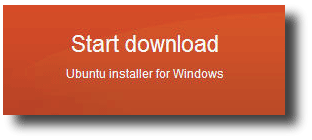Linux distributions can be divided into many categories. They are.......
#1st Category: General Use
Ubuntu (Based on - Debian)
One of
the most popular general-use distributions with one of the largest selections of software.
Fedora (Based on - Red hat, Oriented from - It self )
The most cutting-edge general-use distribution on a 6-month release cycle. It's cutting edge in two
ways: new versions of software, and it use new software before other distributions use them.
Open SUSE (Based on - It self, Oriented from - Slowkware)
A stable,
general-use distribution for everyone that excels in enterprise environments.
openSUSE includes a few different defaults such as it’s package manager and the
KDE desktop environment
Debian (Based on - It self, Oriented from - It self )
One of
the most stable distributions in existence, with a large selection of software.
It is often used as the base of many other distributions.
Linux Mint (Based on - Debian, Oriented from - It self )
A
highly-customized distribution that includes many features out-of-the-box that
other distributions do not, including codecs. Linux Mint has such a large
following that it’s starting to look toward going in its own direction.
Mandriva Linux (Based on - Red hat, Oriented from - Mavdrova)
Back in
the day, one of the most popular distributions when it was known as “Mandrake
Linux”. A great general-use distribution which uses custom themes and system
tools.
PC Linux OS (Based on - It self, Oriented from - It self )
Another
general-use distribution that combines technologies from different
distributions to present an overall great experience.
Linpus Linux (Based on - Red hat, Oriented from - It self )
A
general-use distribution that has specialized themes and apps for an easier
overall user experience
Pinguy (Based on - Ubuntu, Oriented from - It self )
A general-use distribution that comes with
anumberofcustomizationstomake an easier out-of-the-box experience.
Slackware (Based on: Itself; Originiated
from: Itself)
One of the oldest living distributions, Slackware allows plenty of configuration and is a great general-use
distribution. It requires some knowledge of Linux and isn’t recommended for new users.
Gentoo (Based on: Itself)
A general-purpose distribution that is centered around machine-specific optimization. Until recently, all softwarewas compiled on the system rather than installing binaries. Not recommended for new users.
#2nd Category: minimal Use
Arch Linux (Based on - It self,
Oriented from - It self )
A minimal rolling-release general-use distribution
where you install only what you want or need. It’s highly cutting-edge and
there are no default installations. Most customizations are done manually in
text files
Puppy Linux (Based on - It self, Oriented from - It self )
A very small distribution that uses an
extremely low amount of resources. Great for older systems or those that need
every drop of power for their tasks. Compatible with: Slackware, Ubuntu, others with Woof tool
Bodhi Linux (Based on: Ubuntu)
A great lightweight alternative for
systems that can’t run other desktop environments. Still very functional and
relatively elegant.
#3rd
Category: Commercial Use
Red Hat (Based on - Fedora,
Oriented from - It self ).
A commercial solution from Red
Hat for a great enterprise system, both desktop and server. Costs of the
distribution come from support packages.
SUSE Enterprise
Linux
One of two preferred enterprise
systems for most Linux administrators. SUSE includes plenty of tools to make
the admin’s job a lot easier.
#4th
Category: Enterprise
Cent OS (Based on
- Red hat, Oriented from - It self )
A great, free clone of Red Hat Enterprise
Linux for a pure, stable enterprise system.
#5th
Category: Like Mac os X
Pear OS (Based on
- Ubuntu, Debian )
A very beautiful general-use distribution that mimics
the look, feel, and functionality of Apple’s Mac OS X.
#6th
Category: Like Microsoft
Zorin OS (Based
on – Ubuntu)
A general-use distribution that mimics the look, feel,
and functionality of Windows. This is geared for those who prefer the Windows
interface or need an easier way to transition from Windows to Linux.
#7th
Category: Special Use
Joli OS (Based on
– Ubuntu)
A distribution aimed for use on netbooks and working
with different cloud services. Who needs ChromeOS?
ArtistX (Based on
– Ubuntu)
A specialized distribution that includes virtually every
single multimedia application for Linux that you can think of. Great for work
on images, sounds, and videos.
Parted Magic
A
distribution aimed specifically at partitioning your hard drives, but includes
plenty of other features that make it more of a rescue disc than a lone
partitioning tool.
GPated (Based on
- Ubuntu, Debian )
A distribution made especially for partitioning hard
drives. The distribution comes as a LiveCD only and contains only the GParted
partitioning software and a console.
Back Track
Linux (Based on – Ubuntu Originated from: Whoppix)
A fantastic distribution that is specialized for network
penetration testing and security auditing. It includes all kinds of software
and needed patches to do.
Source: Makeuseof.com (http://www.makeuseof.com)
























